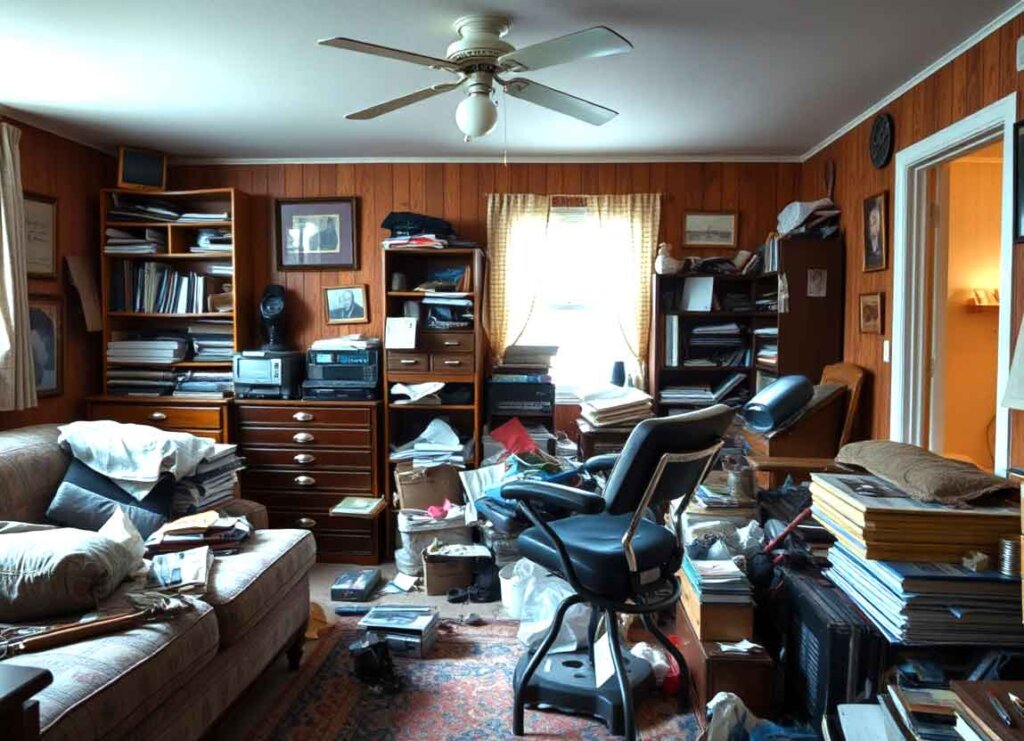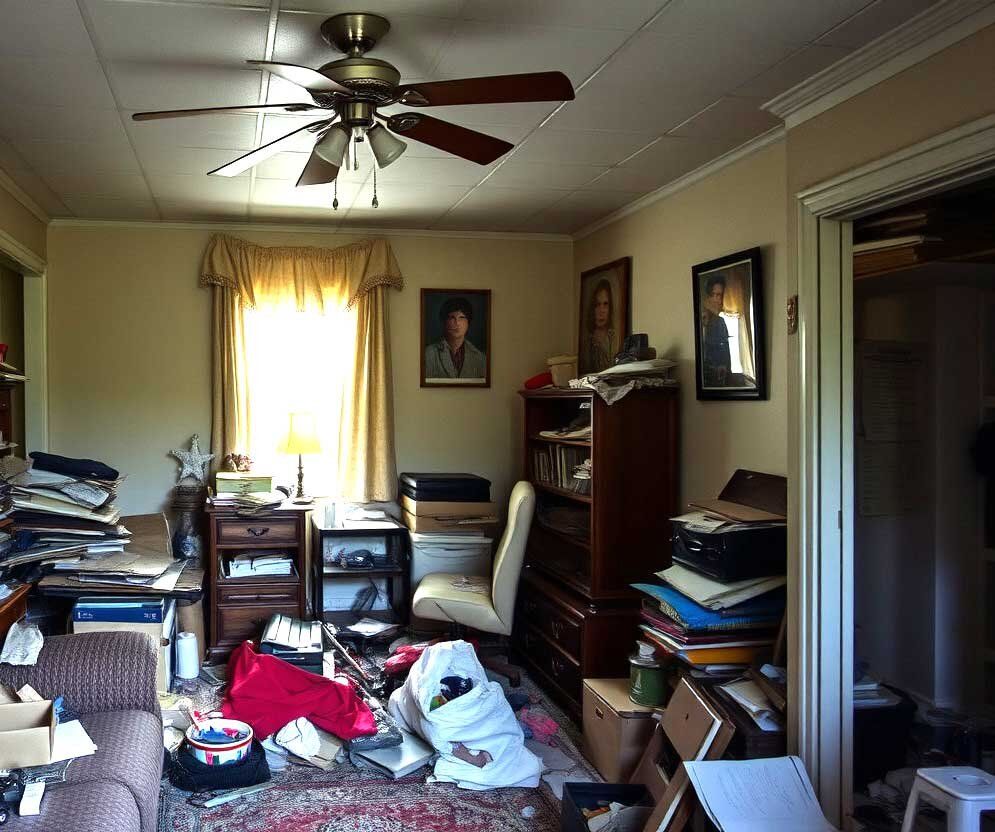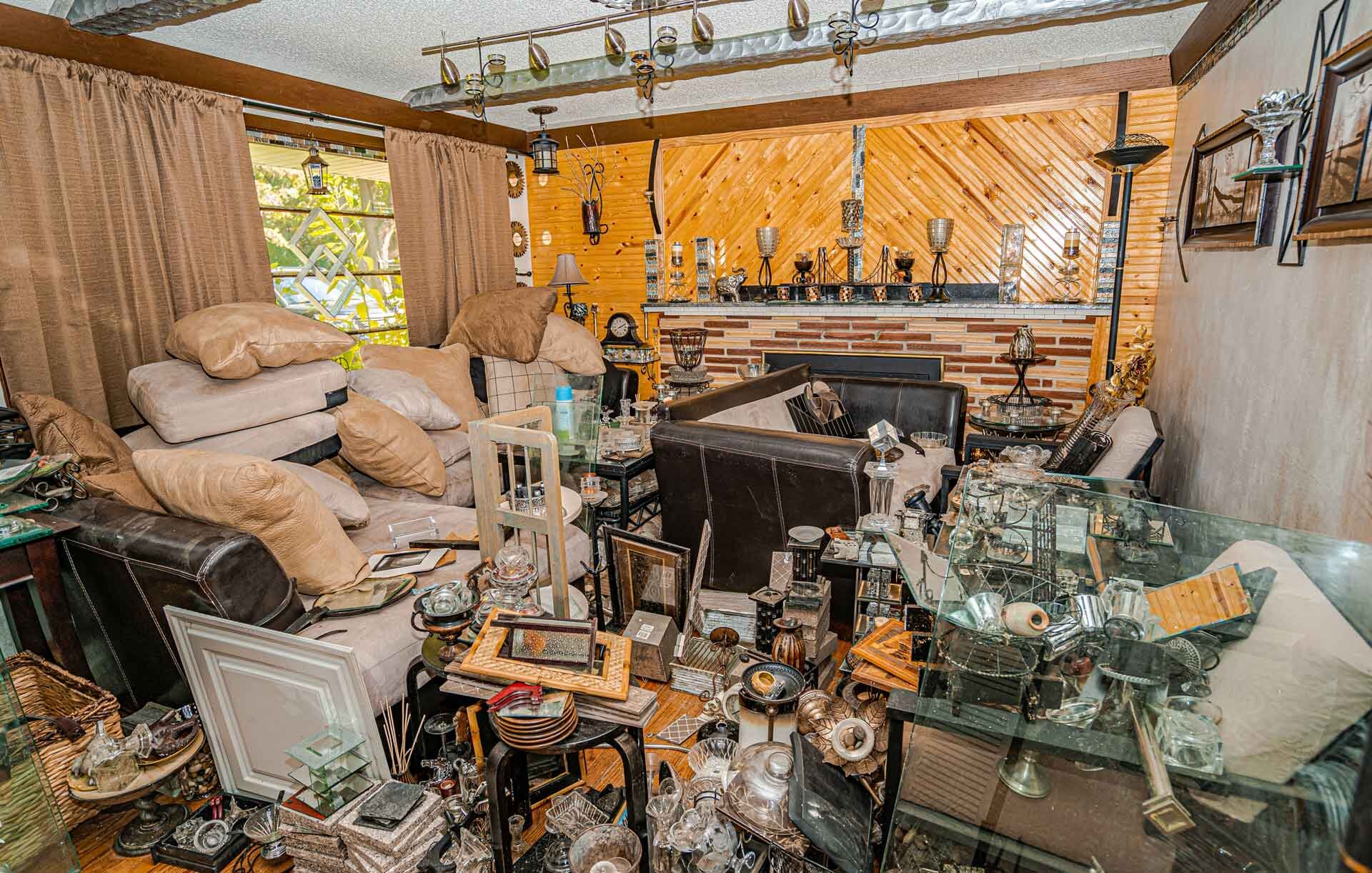Are you wondering how to sell a hoarder house in Southern California without the stress? Perhaps you’ve heard about the clutter and emotional challenges that hoarding brings, and you’re unsure how to begin. Selling this type of property can feel overwhelming, especially because hoarding involves deep-rooted emotional attachments to belongings. However, with patience, understanding, and a methodical plan, you can find success. In this guide, we’ll walk you through the essential steps, from defining what a hoarder house is to exploring the options for selling it quickly. By the end, you’ll know exactly which path is best for you and how to navigate each phase with compassion, practical insight, and respect.
How to Sell a Hoarder House
When faced with selling a hoarder house, it’s easy to feel daunted by the task. Hoarding disorder is a serious mental health condition that compels individuals to accumulate items—often far beyond what a typical homeowner might store. Over time, this buildup creates massive clutter, making daily life difficult. When it’s time to sell, all that extra “stuff” can seem like an insurmountable barrier.
Despite the hurdles, selling a hoarder house in Southern California can be done. The key is to handle the process with sensitivity and understanding, especially if you’re helping a family member or close friend who struggles with hoarding. The journey may involve deep emotions, but by recognizing these feelings and providing the right support, you can move forward with confidence. Let’s delve into some background on hoarder houses and why they’re different from typical listings.

What is a Hoarder House?
A hoarder house is a property where someone with hoarding disorder has amassed an abundance of personal belongings, trash, or items that most people would consider unneeded. Hoarding disorder is marked by extreme difficulty discarding or parting with possessions. These items could be newspapers, old clothing, broken furniture, or other objects that have little monetary or practical value. The individual often believes these things are necessary or has a strong emotional bond to them, making it hard to let go.
In Southern California , hoarder houses can appear in any neighborhood and any type of dwelling—single-family homes, condos, or even rental units. While hoarding can affect anyone, the degree of clutter and disorganization can differ greatly. Some hoarder houses might have entire rooms blocked by piles of belongings, while others simply have an excess of items that need reorganization. In all cases, preparing such a property for the real estate market usually demands extra effort and sensitivity.
Selling your hoarder house?
Contact us for your cash offer today!
Can You Sell A Hoarder House?
You may be wondering whether it’s even possible to sell a house that’s filled to the brim with clutter. The answer is yes! You can sell a hoarder house, but the approach is different from selling a typical home. Patience, empathy, and a robust strategy are the cornerstones of success. Here’s what to remember:
- Understand the Emotional Aspect: Hoarding often arises from complex emotional and psychological issues. Selling such a house requires compassion. If you’re helping someone close to you, talk with them about their concerns and be honest about the steps you’ll need to take.
- Encourage Professional Help: In some cases, the person who struggles with hoarding may benefit from speaking to a counselor or therapist. Emotional support can ease the stress of parting with belongings.
- Focus on Gradual Decluttering: Instead of tackling the entire house at once, break the job into smaller segments. For instance, handle one room at a time or one category of items at a time. This approach helps reduce overwhelm and eases the hoarder into the process.
By setting a plan that respects the hoarder’s feelings, you can help them navigate each phase. If you’re clear on goals and maintain compassion, you can reduce friction and keep the process running smoothly.
Staging a Hoarder Home
Once you’ve made progress in decluttering and cleaning, staging is your next big step. Staging can help highlight a home’s best features, making it more appealing to buyers in Southern California . With a hoarder house, it’s especially important to showcase the available space in an organized, welcoming way.
Hire Professional Help: Professional stagers understand how to arrange furniture and decorations in a way that captures buyers’ attention. They can help you decide which items to keep on display and which to remove.
Keep Décor Minimal: Because hoarder houses often have an excess of items, try a minimalist approach. Too many decorative items may trigger memories of clutter and reduce the visual impact of each room.
Be Sensitive to Emotions: The hoarder might feel uneasy seeing items moved or removed. Work closely with them, ensuring they understand these changes are temporary and meant to boost the home’s marketability.
Remember, staging isn’t about hiding problems; it’s about revealing the property’s best qualities to potential buyers. Even small adjustments can make a world of difference in how a room looks and feels.
Pricing a Hoarder Home
Setting the right price for a hoarder house in Southern California demands careful thought. Typically, these properties need extra cleanup or repair, which can lower their market value. However, that doesn’t mean you have to price the house far below its true worth. Here are a few tips:
Compare Market Trends: Investigate recent sales of similar homes in your area. Be aware that a hoarder house may require deeper cleaning or renovation, so factor in the cost of those improvements.
Consult Experts: A local real estate agent familiar with hoarder homes can provide an accurate estimate of the property’s value. They can also guide you on how to adjust the price based on the needed work.
Leave Wiggle Room: Some buyers might be open to fixing the place themselves if the price is right. If you set a fair price but remain flexible, you might attract a broader pool of potential buyers.
Balancing the property’s true market value with its condition is a delicate process. By pricing the house in a way that acknowledges any extra work needed, you stand a better chance of securing a serious buyer quickly.
Dangers of a Hoarder Home
Hoarder houses aren’t just about clutter; they can pose serious safety and health risks. Understanding these dangers allows you to address them proactively before listing the property. Here are some common hazards:
Health Hazards
Excessive clutter can hide mold growth, harbor vermin, or conceal other harmful substances. Old newspapers, damp fabrics, and unwashed items can create damp spots where mold thrives. Not only is mold unsightly, it can also lead to respiratory issues. Additionally, if pests like mice or cockroaches take shelter in the clutter, they can spread diseases and aggravate allergies.
Fire Hazards
Stacks of papers, discarded boxes, and forgotten flammable items increase the risk of fire. In the event of an emergency, these piles also make it harder to exit the home quickly. Before putting the property on the market, clear walkways and reduce flammable materials to comply with safety standards.
Bacteria
Dust, rotting food, and general debris can lead to bacteria buildup, which may cause illness or infection. To combat this threat, thorough cleaning and sanitizing are crucial steps. Remember to wear protective gear like gloves and masks when dealing with heavy dirt or unknown substances, especially if they’ve been sitting for a long time.
By addressing these hazards, you can make the house safer for potential buyers (and for anyone still living in it). The more effort you put into cleaning and repairs, the fewer objections you’ll face when buyers view the home.
Can A Hoarder House Be Condemned?
Yes, a hoarder house can be condemned if it poses a significant threat to health or safety. Local officials might declare a property unfit for habitation if it has serious structural damage, unchecked mold infestation, or overwhelming pest problems. Being “condemned” means no one is legally permitted to occupy the home until it meets safety standards.
Condemnation is typically a last resort. In most cases, city or county inspectors will give property owners notice and time to fix major issues before taking drastic action. If you’re dealing with a hoarder house under the threat of condemnation, it’s important to move quickly:
Identify Immediate Risks: Address serious problems first—like compromised electrical wiring or severe water damage.
Work with Authorities: Cooperate with local inspectors or code enforcement officers. They might provide guidance or resources to help you bring the property up to code.
Seek Professional Assistance: If damage is extensive, consider a contractor or cleaning service that specializes in severe clutter conditions.
If you tackle health and safety issues head-on, you have a better chance of avoiding condemnation. And if the property has already been condemned, you’ll need to resolve any violations to make it legally habitable again.
Addressing Safety Issues
Safety should be your top priority when preparing a hoarder house for sale. Ignoring problems like mold or broken flooring puts everyone at risk and can lead to legal complications. Always:
Secure essential utilities (electricity, gas, water).
Inspect the foundation, roof, and walls for damage.
Ensure smoke detectors and carbon monoxide alarms work properly.
Once you’ve dealt with big-ticket concerns, you can focus on clearing clutter and cleaning. By making the home safe, you’ll avoid setbacks in the selling process and attract more serious buyers.
Should I Fix or Sell a Hoarder House As-Is?
One of the biggest decisions you’ll face is whether to repair and renovate the hoarder house or sell it as-is. Each route has pros and cons, and the choice largely depends on your finances, time, and personal goals. Below are points to consider.
Cleaning a Hoarder House
A top-to-bottom clean is often the first step, regardless of whether you plan to do renovations or sell as-is. For severe cases:
Professional Cleaning Services: They have specialized equipment and expertise. Although costly, they can handle tough jobs more quickly and thoroughly.
DIY Method: If the clutter isn’t overwhelming, you might choose a do-it-yourself approach. Recruit friends or family and focus on sorting, donating, and discarding items methodically. This can be time-consuming, so weigh the cost of your own time versus hiring pros.
A deep clean can significantly improve the property’s appearance and eliminate health risks, but it can also be expensive. Evaluate the extent of the hoarding to decide whether the investment makes sense.
Renovating a Hoarder House
Once the property is cleaned, you may want to assess if it’s worth making upgrades. Cosmetic improvements like new paint, fresh flooring, or updated fixtures can raise the property’s market value. However, if the house has more severe problems—like structural or electrical issues—those repairs can skyrocket your expenses.
Ask yourself these questions before renovating:
What’s the extent of the damage?
Will renovations significantly boost the home’s market value?
Do I have the budget and time to complete large-scale projects?
If fixes are minor and could lead to a worthwhile increase in sale price, renovating might be a smart move. But if you’re facing an endless list of pricey repairs, consider selling the house as-is.
Cost to Fix a Hoarder House
The cost to fix a hoarder house varies widely. Minor clutter and basic cleaning might not be too expensive, but dealing with pests, mold, or structural problems can strain even a healthy budget. In some cases, the money required to address these issues could exceed the property’s updated market value.
Inspection Fees: A home inspector may reveal hidden problems that drive up the total repair cost.
Repair Expenses: Replacing carpets, fixing walls, or updating electrical systems can add up fast.
Holding Costs: While you renovate, you still need to pay property taxes, utilities, and possibly a mortgage.
Before you invest in big repairs, get professional quotes and consider your break-even point. If repairing the home will bring you a fair profit (or at least avoid a major loss), then go for it. Otherwise, selling as-is might be the better option.

Inheriting a Hoarder House in Southern California
Inheriting a house can be both exciting and stressful—especially if the home’s previous owner was a hoarder. If you’ve inherited a hoarder house in Southern California , here are some steps to keep you organized:
Evaluate the Property’s Condition:
- Hire a professional inspector to look for damage from water, pests, or neglect.
- Check for structural soundness and any health hazards.
Create a Decluttering Plan:
- Sort items into categories (keep, donate, discard).
- Consider using professional organizers if the task feels overwhelming.
Decide on Repairs:
- Identify immediate safety concerns first, then decide if optional upgrades are worth the cost.
- Calculate how each repair affects the likely sale price.
Discuss with Family (if applicable):
- If multiple heirs are involved, share costs and responsibilities.
- Keep lines of communication open to avoid misunderstandings.
This planning ensures you address both emotional and financial factors. Inheritance often carries sentimental weight, so approach the process with empathy if the hoarder was a loved one. Once you have a clear plan, you can confidently move forward to sell.
Need to get rid of your hoarder house? We can help!
Contact us for your cash offer today!
How To Sell A Hoarder House Quickly
When you need to sell a hoarder house fast, speed and efficiency become critical. Fortunately, there are two primary paths you can take to achieve a swift sale:
Selling A Hoarder House With An Agent
If the property is in decent shape—maybe just needing a thorough cleanup and a few touch-ups—a real estate agent in Southern California can be a tremendous asset. Agents have access to the Multiple Listing Service (MLS), marketing tools, and a broader network of potential buyers.
- Benefits:
- Professional marketing photos and listings.
- Strategic pricing based on local market data.
- Negotiation expertise to secure the best possible offer.
- Drawbacks:
- If the hoarder house requires extensive repairs, the agent may advise postponing the listing until the work is done.
- Showings can be frequent, and they might be disruptive if the property isn’t fully decluttered.
Respect for the homeowner’s emotional state is crucial here. If the former occupant is still around, try to coordinate any staging and showings in a way that minimizes distress.
Selling A Hoarder House to a Cash Buyer
If you’re looking for a lightning-fast transaction and wish to bypass showings or repairs, selling to a cash buyer or real estate investor may be your best bet. Cash buyers in Southern California often specialize in properties that need significant work, making them more open to hoarder houses.
- Advantages:
- No Repairs Needed: They buy as-is, so you won’t have to clean every inch of the property.
- Quick Closing: Cash deals can finalize within days or weeks, rather than months.
- Lower Stress: Fewer showings, fewer inspections, and less back-and-forth negotiation.
- Considerations:
- Investors typically offer below market value because they plan to invest in renovations.
- You may need to compare offers from multiple buyers to get a fair deal.
For many sellers, the convenience of a swift, hassle-free sale outweighs the possibility of a slightly higher profit through a traditional listing. If time and simplicity are paramount, a cash buyer might be the ideal choice.
Important Note: Regardless of which route you choose, always disclose the hoarding history or any known defects with the property. Full transparency helps build trust and prevents misunderstandings later.
Related Articles
Yes, you can sell your hoarder home in Southern California …
Even though the idea of selling a hoarder house can feel overwhelming, the process can run smoothly if you handle it step by step. Start by addressing major safety concerns, then move on to decluttering and possible repairs. Depending on your goals, budget, and timeline, you might list with a Southern California real estate agent or sell quickly to a cash buyer. Either way, how to sell a hoarder house in Southern California becomes much clearer when you show empathy, plan thoroughly, and use the available resources.
Remember:
Stay Compassionate: Hoarding is often rooted in emotional pain or mental health challenges. Respect the homeowner’s emotions.
Be Prepared: Cleaning and repairs can be time-consuming, so set realistic expectations.
Weigh Your Options: Explore both traditional listings and cash buyers. Your circumstances will dictate which is more practical.
If you need additional guidance about decluttering, staging, or selling a hoarder home in Southern California , don’t hesitate to reach out. Professionals are available to ease the burden and walk you through each step. With proper understanding and a well-structured plan, you’ll transform a seemingly impossible situation into a productive real estate sale that benefits everyone involved.
To learn more about what to do with your hoarder house in Southern California , reach out to our team! We are happy to help!

